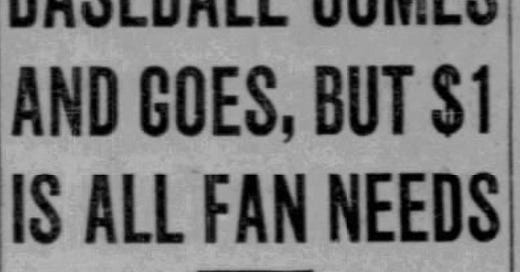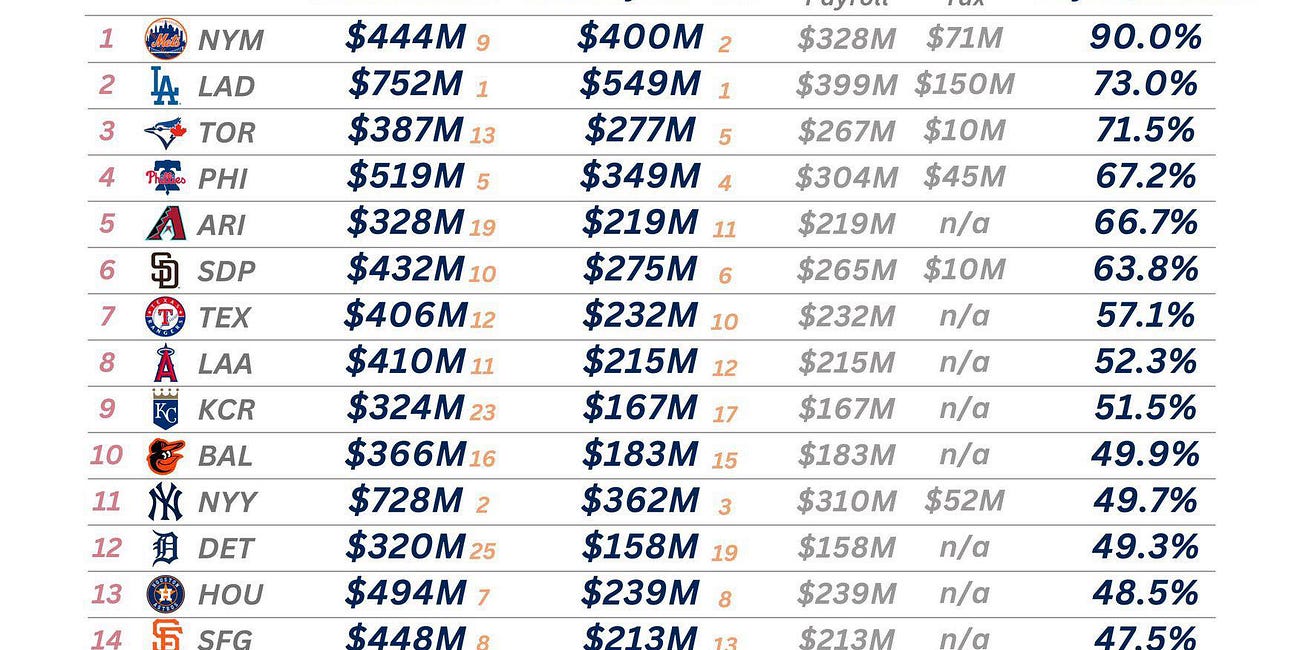$1 Ticket Democracy
This post really needs some kind of trigger warning. What you’re about to read might make you feel quite upset.
I was reading through the April 15, 1930 issue of The Chicago Tribune last night when I came across an article so good that I knew I had to feature it. And so here goes.
Quick note at first: this all comes from pages 23 and 24 of that issue of The Chicago Tribune, just in case you want to look it up for yourself. I’ll copy the complete article here, complete with my own commentary.
Now, you need to realize first off that Westbrook Pegler was not well known as a sports journalist — not even in 1930. He was to eventually become a right wing populist, and coined such phrases as “bleeding heart liberal” during the early years of the Franklin Roosevelt administration.
But, of course, the only “right” and “left” we care about here are “right field” and “left field,” and so I’ll leave any ideological implications up to your imagination.
The thing that is striking here is that Major League teams in 1930 could still get by with $1 tickets, despite the ballooning payroll costs and the other expenses of their day. Compare that to the reluctance current owners have to pay for players:
This period of baseball ownership history is often referred to by historians and economists as a time of altruistic ownership. In other words, the owners saw themselves as doing some sort of public service by owning the local ballclub — despite the obvious fact that their teams were making out like bandits. In fact, we know that the major league clubs of the time made a lot of money, since we can trace how they spent their excess money on the best minor league stars of the day.
Those of you familiar with the history of association football in England might remember a time of altruistic ownership that ended as recently as the early 1980s.
The point here, though, is that the prize fights (i.e. boxing bouts) of the day were largely attended by celebrities and people who would show up to be seen. Baseball was different. Baseball was still a very blue collar sport, the sort of sport where you were one of the guys in the crowd, and you were expected to root just like the other average Joe.
Now this is the part that should make you sad.
The reason? We have seen the seating arrangements redone. “General Admission” went the way of the dodo bird decades ago; in fact, I doubt most of my readers can remember a time when general admission tickets were a thing for major league baseball games. And the broker described here seems to be a staple at the ballparks of today.
My mom told me the other day that she couldn’t find tickets to a minor league baseball game in Salt Lake City, Utah for $20 each. There’s a nice new ballpark, sure — but it’s clearly only designed for the upper class fans. The average Joe doesn’t watch baseball because he can’t access the game; he’s been priced out.
I’m not sure that the dismissive attitude towards Max Schmeling is appropriate — but this isn’t the Boxing History Journal, after all. The overall point makes sense, and is amazing to examine from the light of the modern game.
This part should also make you feel frustrated. Current ticket pricing policy means that the better teams will cost you more money when they come to town. The men in suits simply aren’t interested in your $1 anymore.
And this is the biggest pain of all, of course.
It’s not the same anymore. If you’re a fan of the Athletics, not only do you have to consult a geographer to figure out where the team actually plays, but you also aren’t going to get in for cheap. Watching Dodgers home games is a lot different than watching White Sox home games.
It wasn’t always that way. And we should be upset that things changed.













We most definitely are not amused. We've allowed the lust for money infect everything.